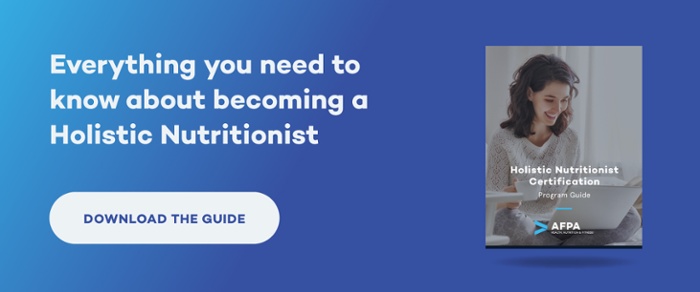Countless diet tips and fads seem to lurk around every digital corner. They promise quick weight loss and unrealistic results to unsuspecting readers who don’t know any better than to fall for the latest gimmick. They leave people disappointed, discouraged, and often weighing even more than they did before they started.
As a wellness professional, you know that the path to healthy, lasting weight management isn’t always the shortest or fastest one, but that’s not always what your clients want to hear. Here are seven popular (and somewhat controversial) weight-loss strategies you may be hearing about right now, along with some alternative plans that have been proven to offer positive results over time. Read our post on debunked health & fitness claims for more health news.
1. Never skip breakfast—even if you aren’t hungry
Somewhere over the last couple of centuries, breakfast earned the moniker of “the most important meal of the day.” But is it really?
The emphasis on breakfast originated from the idea that eating a meal right after waking up would jump-start the metabolism and send the consumer on their way to a healthy, happy day of optimal fat burning. Having heard the evangelism of breakfast and its many “benefits,” many people doggedly wake from their slumber to eat a hearty first meal, whether they are hungry or not.
Research shows that breakfast does not have an impact on overall metabolism throughout the day. In fact, one study showed that skipping breakfast might lead to slightly higher weight loss. Another study revealed that people who skipped breakfast ate an average of 400 fewer calories throughout the day.
What to try instead
While everyone is different and there is certainly no harm in eating a healthy breakfast, some of your clients may have positive results by increasing the window between their last meal of the day and the first meal of the next day (one form of intermittent fasting).
If your clients are intimidated by the idea of intermittent fasting, reassure them that there are many lengths and extremes to fasting, but skipping breakfast (especially if they aren’t hungry) is just one easy way to dip their toe in the intermittent fasting waters to see what kinds of health benefits they may experience.
Of course, clients with health issues that impact blood sugar levels should always consult a physician before skipping meals or starting any form of fasting plan. Clients in good health, however, may be surprised to learn that they have the power to choose the time of their “most important meal of the day.”
2. Eliminate all fat in your diet
When people think about weight loss, they think about things like body fat percentage, fat loss, and decreasing fat intake. Fat has somehow become the villain of weight loss. Lots of people switch to low-fat versions of their favorite foods or cut out nearly all fat from their diet, but the scale doesn’t budge.
The scientific truth is that the human body needs fat to survive, process nutrients, and to maintain energy levels and good health. The key is to consume the right type of fat. Healthy monounsaturated and polyunsaturated fats actually promote long-term health when consumed in moderation. The true villains in the fat world are artificially-created trans fats and most types of saturated fats. According to one Harvard study, a diet that contains just 2 percent of calories from trans fats can bump up the risk of heart disease by 23 percent.
What to try instead
Instead of treating all fats as equal, encourage your clients to add healthful foods like avocados, olive oil, and nuts to their diet. Whole foods with healthy fats are more satisfying than their processed counterparts. They may also contribute to an overall reduction in calorie consumption along with the heart-boosting benefits of reduced inflammation and a lower risk of diabetes and stroke.
3. Don’t try to lose weight quickly
The longstanding myth that if you lose weight quickly, you won’t maintain your new weight simply isn’t true. That strategy was born of the (accurate) fact that long-term weight loss requires a maintainable approach instead of a “shock to the system” that can’t be sustained over time.
Slow and steady weight loss is fine, but research shows that rapid weight loss at the beginning of a new diet and exercise regimen doesn’t always mean that the weight will be regained later. One study showed that a group of participants who lost weight at a fast pace during the first month of the study were over five times as likely to have lost a significant percentage of body weight within 18 months, compared to participants who got off to a slower start with their weight loss.
Of course, weight-loss plans should always be sustainable and sensible, right from the start. If your client decides to cut calories to an unhealthy extreme, they may drop a few extra pounds in the beginning, but the weight will almost certainly come back. Rapid weight loss should never be prioritized over healthy weight loss, but it shouldn’t be ruled out as a great way to jump-start a lasting lifestyle change either.
What to try instead
After you and your client define their weight-loss and health goals, work with them to identify a diet and exercise program that fits their daily routine, abilities, and interest. If your client feels excited about their new wellness program, they will be more likely to jump in with enthusiasm and experience quick results from the start.
As they become more fit and have less weight to lose, their results may plateau a bit. Keep their fitness and diet program fresh and interesting as they progress, but also reassure them that it’s a normal part of lifelong weight management to experience smaller, steadier increments of weight loss over the duration of their wellness journey.
4. Avoid carbohydrates at all costs
Many of the fad diets in recent years, like Atkins, Keto, and others, subscribe to the idea that carbohydrates lead to weight gain and should be severely limited (or cut out completely). Much like fats, carbohydrates aren’t all bad.
Carbohydrates come in three main forms: sugar, starches, and fiber. The body turns simple carbohydrates (commonly found in sugar—both natural and processed) into quick energy. Complex carbohydrates (found in whole grains and starchy vegetables) are longer-lasting energy sources that take your body more time to convert to energy.
Neither simple nor complex carbohydrates are inherently “evil” when it comes to weight loss. Fruits and vegetables, for example, are simple carbohydrate-laden foods that provide a host of vitamins and minerals that contribute to a holistically healthy diet. Likewise, the heart-healthy complex carbohydrates in whole grains have been proven to reduce the risk of Type 2 diabetes and cardiovascular diseases.
What to try instead
Rather than eliminating carbohydrates in their diet, encourage your clients to stick to whole foods that are free from processed ingredients or refined sugars. Even a high-carb diet can lead to lasting weight loss when it consists of the right food. One clinical trial showed that a group of participants who ate a diet of 70 percent plant-based carbohydrates showed a significant drop in body fat levels compared to other subjects in the study.
The key to carbohydrates, as is true for most things in life, is moderation and intention. Choose foods that are free from additives and processing and are full of essential vitamins and nutrients to fuel your body.
Become a Certified Holistic Nutritionist Online in 6 Months or Less
5. Eat small, frequent meals to lose weight
You’ve no doubt heard plenty of experts promote “grazing” throughout the day instead of eating regular meals. The belief is that the frequent intake of food tricks your body into staying in fat-burning mode for a continuous period of time. While there isn’t anything inherently wrong with consuming smaller, more frequent meals, it has the potential for two issues that will bring weight loss to a screeching halt.
First, if you are constantly snacking and eating, it becomes much more difficult to track overall calorie consumption. Taking in more calories than your body needs for fuel will lead to weight gain—no matter how and when they are consumed.
Secondly, grazing may signal your body to produce excess insulin and store more sugar. The result is a yo-yo effect of blood sugar levels and the potential to feel less satisfied and energized by the food you eat.
What to try instead
Just as it benefits “breakfast-skippers,” intermittent fasting is an effective alternative to “grazing” throughout the day. During periods of fasting, the body releases Human Growth Hormone (HGH) to spur fat loss and muscle gain and help your body repair itself at the cellular level. Some clients may fear that intermittent fasting will create a feeling of intense hunger, but it may actually serve to stave off hunger and regulate insulin production.
There are plenty of ways to employ intermittent fasting, depending on a person’s lifestyle, underlying health conditions, and their long-term wellness goals. Read The Ultimate Guide to Intermittent Fasting to learn more.
6. It’s possible to spot-reduce fat
Most people have at least one area on their body that they would like to improve. Instead of approaching fitness from a “big picture” angle, they desperately seek “get fit quick” plans to trim fat on a certain body part.
The truth is that the human body is a wonderfully interconnected system of highways and intersections. Each system, muscle group, and body part is fueled by the same energy. If someone consumes more calories than they expend, they add to their existing fat layers. Thousands of crunches and dozens of push-ups may add muscle, but they won’t have any effect at all on fat.
In fact, some people who seek to spot reduce may feel that they look even larger because they are simply adding muscle that is forced to hide under a layer of fat.
What to try instead
It’s important to work out specific muscle groups to improve their tone and strength, and your clients shouldn’t wait until they’ve reached their weight-loss goals to start a weightlifting or core strengthening routine. But instead of spending time doing endless sit-ups, they will need to adhere to a healthy diet and add cardiovascular exercise to their daily routine. Only then will they start to see results in their “trouble areas.”
7. Swap diet soda for sugary drinks to lose weight
Compared to regular soda and other sugar-laden drinks, it’s indisputable that diet soda has far fewer calories. But when it comes to weight loss, diet soda may create more harm than good. Studies show that artificial sweeteners in diet sodas may cause a disconnect between your brain and the trigger that alerts it to a feeling of fullness. As a result, there is a higher risk of consuming excess calories.
What to try instead
While it’s okay to indulge in a diet soda on occasion, plain old water is still the best beverage to support a healthy diet and lifestyle. It’s calorie-free, easily accessible, and can make you feel fuller longer than artificially-sweetened drinks. For flavored beverages, encourage your clients to try sparkling water or organic tea.
As you guide your clients on their journey to better health, be on the lookout for so-called tips and weight-loss claims that won’t help them accomplish their goals. If something seems “too good to be true,” it usually is. Be the voice of reason and encouragement to your clients and stick to scientifically-backed weight-loss strategies that they can maintain long after they reach their goal weight.




